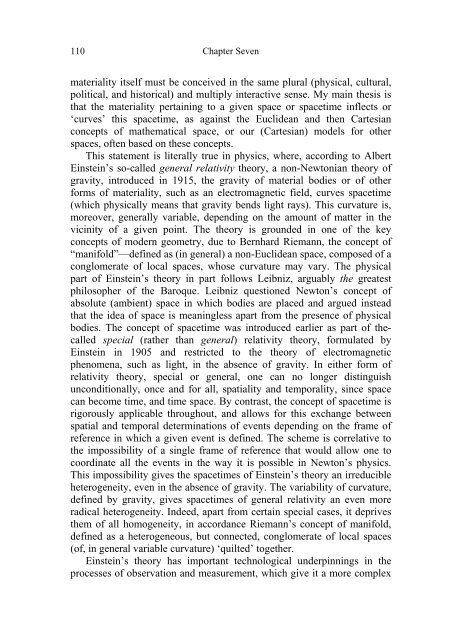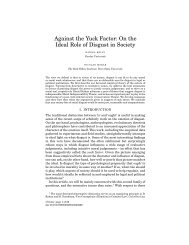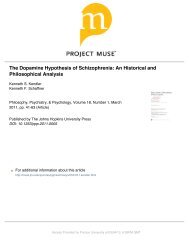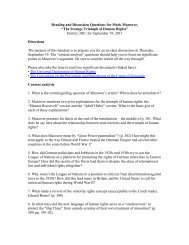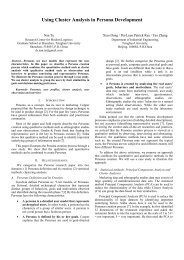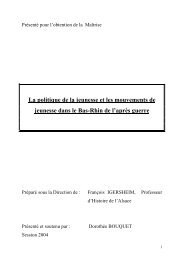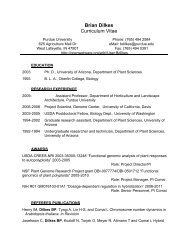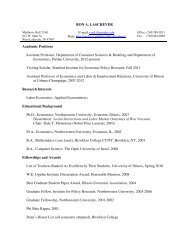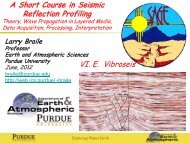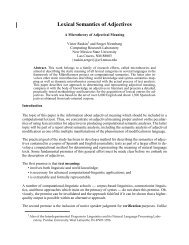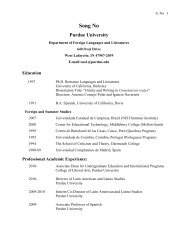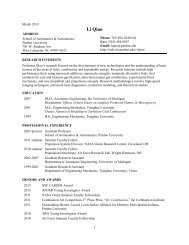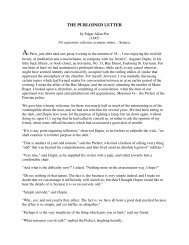'a palace and a prison on each hand': venice between madness and ...
'a palace and a prison on each hand': venice between madness and ...
'a palace and a prison on each hand': venice between madness and ...
Create successful ePaper yourself
Turn your PDF publications into a flip-book with our unique Google optimized e-Paper software.
110<br />
Chapter Seven<br />
materiality itself must be c<strong>on</strong>ceived in the same plural (physical, cultural,<br />
political, <str<strong>on</strong>g>and</str<strong>on</strong>g> historical) <str<strong>on</strong>g>and</str<strong>on</strong>g> multiply interactive sense. My main thesis is<br />
that the materiality pertaining to a given space or spacetime inflects or<br />
‘curves’ this spacetime, as against the Euclidean <str<strong>on</strong>g>and</str<strong>on</strong>g> then Cartesian<br />
c<strong>on</strong>cepts of mathematical space, or our (Cartesian) models for other<br />
spaces, often based <strong>on</strong> these c<strong>on</strong>cepts.<br />
This statement is literally true in physics, where, according to Albert<br />
Einstein’s so-called general relativity theory, a n<strong>on</strong>-Newt<strong>on</strong>ian theory of<br />
gravity, introduced in 1915, the gravity of material bodies or of other<br />
forms of materiality, such as an electromagnetic field, curves spacetime<br />
(which physically means that gravity bends light rays). This curvature is,<br />
moreover, generally variable, depending <strong>on</strong> the amount of matter in the<br />
vicinity of a given point. The theory is grounded in <strong>on</strong>e of the key<br />
c<strong>on</strong>cepts of modern geometry, due to Bernhard Riemann, the c<strong>on</strong>cept of<br />
“manifold”—defined as (in general) a n<strong>on</strong>-Euclidean space, composed of a<br />
c<strong>on</strong>glomerate of local spaces, whose curvature may vary. The physical<br />
part of Einstein’s theory in part follows Leibniz, arguably the greatest<br />
philosopher of the Baroque. Leibniz questi<strong>on</strong>ed Newt<strong>on</strong>’s c<strong>on</strong>cept of<br />
absolute (ambient) space in which bodies are placed <str<strong>on</strong>g>and</str<strong>on</strong>g> argued instead<br />
that the idea of space is meaningless apart from the presence of physical<br />
bodies. The c<strong>on</strong>cept of spacetime was introduced earlier as part of thecalled<br />
special (rather than general) relativity theory, formulated by<br />
Einstein in 1905 <str<strong>on</strong>g>and</str<strong>on</strong>g> restricted to the theory of electromagnetic<br />
phenomena, such as light, in the absence of gravity. In either form of<br />
relativity theory, special or general, <strong>on</strong>e can no l<strong>on</strong>ger distinguish<br />
unc<strong>on</strong>diti<strong>on</strong>ally, <strong>on</strong>ce <str<strong>on</strong>g>and</str<strong>on</strong>g> for all, spatiality <str<strong>on</strong>g>and</str<strong>on</strong>g> temporality, since space<br />
can become time, <str<strong>on</strong>g>and</str<strong>on</strong>g> time space. By c<strong>on</strong>trast, the c<strong>on</strong>cept of spacetime is<br />
rigorously applicable throughout, <str<strong>on</strong>g>and</str<strong>on</strong>g> allows for this exchange <strong>between</strong><br />
spatial <str<strong>on</strong>g>and</str<strong>on</strong>g> temporal determinati<strong>on</strong>s of events depending <strong>on</strong> the frame of<br />
reference in which a given event is defined. The scheme is correlative to<br />
the impossibility of a single frame of reference that would allow <strong>on</strong>e to<br />
coordinate all the events in the way it is possible in Newt<strong>on</strong>’s physics.<br />
This impossibility gives the spacetimes of Einstein’s theory an irreducible<br />
heterogeneity, even in the absence of gravity. The variability of curvature,<br />
defined by gravity, gives spacetimes of general relativity an even more<br />
radical heterogeneity. Indeed, apart from certain special cases, it deprives<br />
them of all homogeneity, in accordance Riemann’s c<strong>on</strong>cept of manifold,<br />
defined as a heterogeneous, but c<strong>on</strong>nected, c<strong>on</strong>glomerate of local spaces<br />
(of, in general variable curvature) ‘quilted’ together.<br />
Einstein’s theory has important technological underpinnings in the<br />
processes of observati<strong>on</strong> <str<strong>on</strong>g>and</str<strong>on</strong>g> measurement, which give it a more complex


